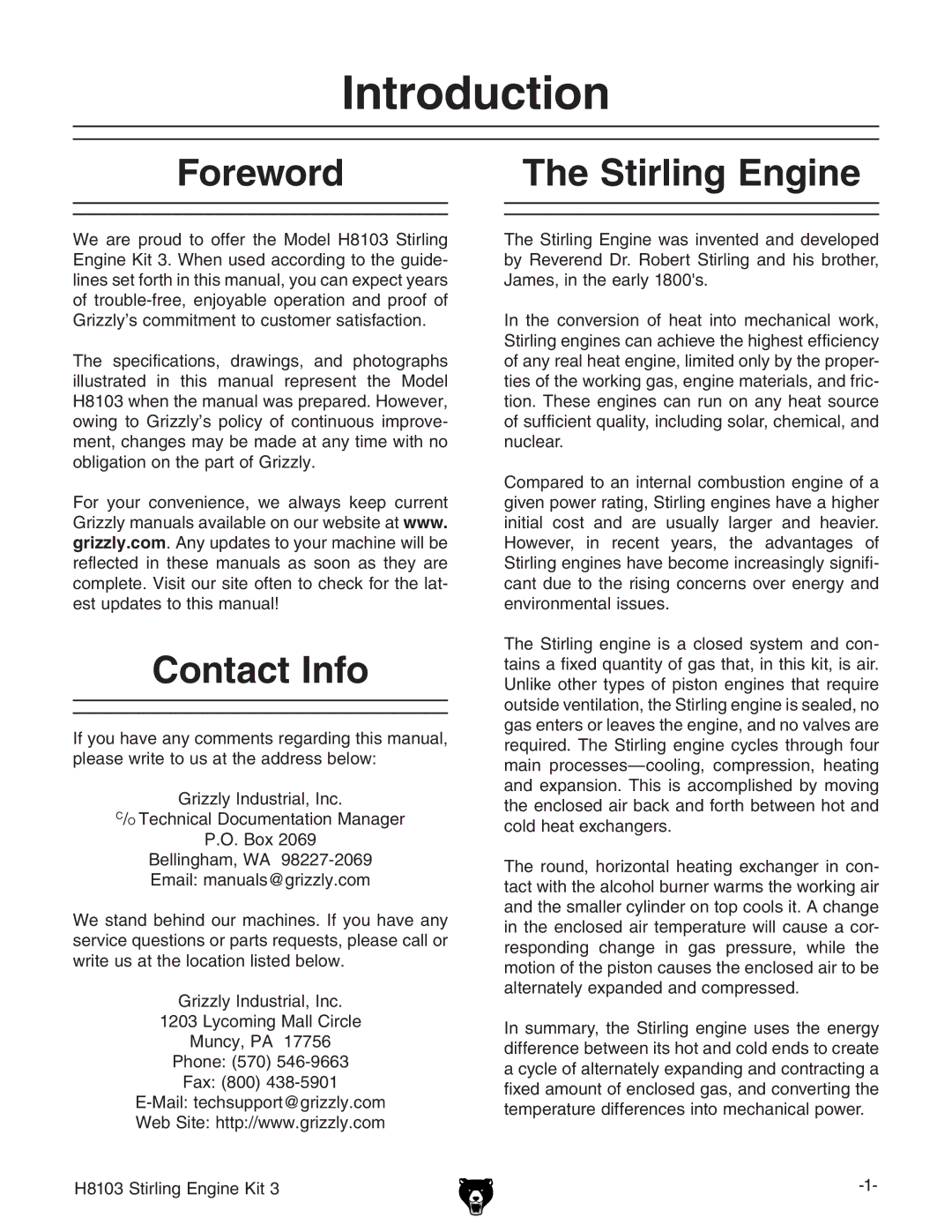
Introduction
Foreword |
| The Stirling Engine |
|
|
|
|
|
|
We are proud to offer the Model H8103 Stirling Engine Kit 3. When used according to the guide- lines set forth in this manual, you can expect years of
The specifications, drawings, and photographs illustrated in this manual represent the Model H8103 when the manual was prepared. However, owing to Grizzly’s policy of continuous improve- ment, changes may be made at any time with no obligation on the part of Grizzly.
For your convenience, we always keep current Grizzly manuals available on our website at www. grizzly.com. Any updates to your machine will be reflected in these manuals as soon as they are complete. Visit our site often to check for the lat- est updates to this manual!
Contact Info
If you have any comments regarding this manual, please write to us at the address below:
Grizzly Industrial, Inc.
C/O Technical Documentation Manager
P.O. Box 2069
Bellingham, WA
Email: manuals@grizzly.com
We stand behind our machines. If you have any service questions or parts requests, please call or write us at the location listed below.
Grizzly Industrial, Inc.
1203 Lycoming Mall Circle
Muncy, PA 17756
Phone: (570)
Fax: (800)
Web Site: http://www.grizzly.com
H8103 Stirling Engine Kit 3
The Stirling Engine was invented and developed by Reverend Dr. Robert Stirling and his brother, James, in the early 1800's.
In the conversion of heat into mechanical work, Stirling engines can achieve the highest efficiency of any real heat engine, limited only by the proper- ties of the working gas, engine materials, and fric- tion. These engines can run on any heat source of sufficient quality, including solar, chemical, and nuclear.
Compared to an internal combustion engine of a given power rating, Stirling engines have a higher initial cost and are usually larger and heavier. However, in recent years, the advantages of Stirling engines have become increasingly signifi- cant due to the rising concerns over energy and environmental issues.
The Stirling engine is a closed system and con- tains a fixed quantity of gas that, in this kit, is air. Unlike other types of piston engines that require outside ventilation, the Stirling engine is sealed, no gas enters or leaves the engine, and no valves are required. The Stirling engine cycles through four main
The round, horizontal heating exchanger in con- tact with the alcohol burner warms the working air and the smaller cylinder on top cools it. A change in the enclosed air temperature will cause a cor- responding change in gas pressure, while the motion of the piston causes the enclosed air to be alternately expanded and compressed.
In summary, the Stirling engine uses the energy difference between its hot and cold ends to create a cycle of alternately expanding and contracting a fixed amount of enclosed gas, and converting the temperature differences into mechanical power.
